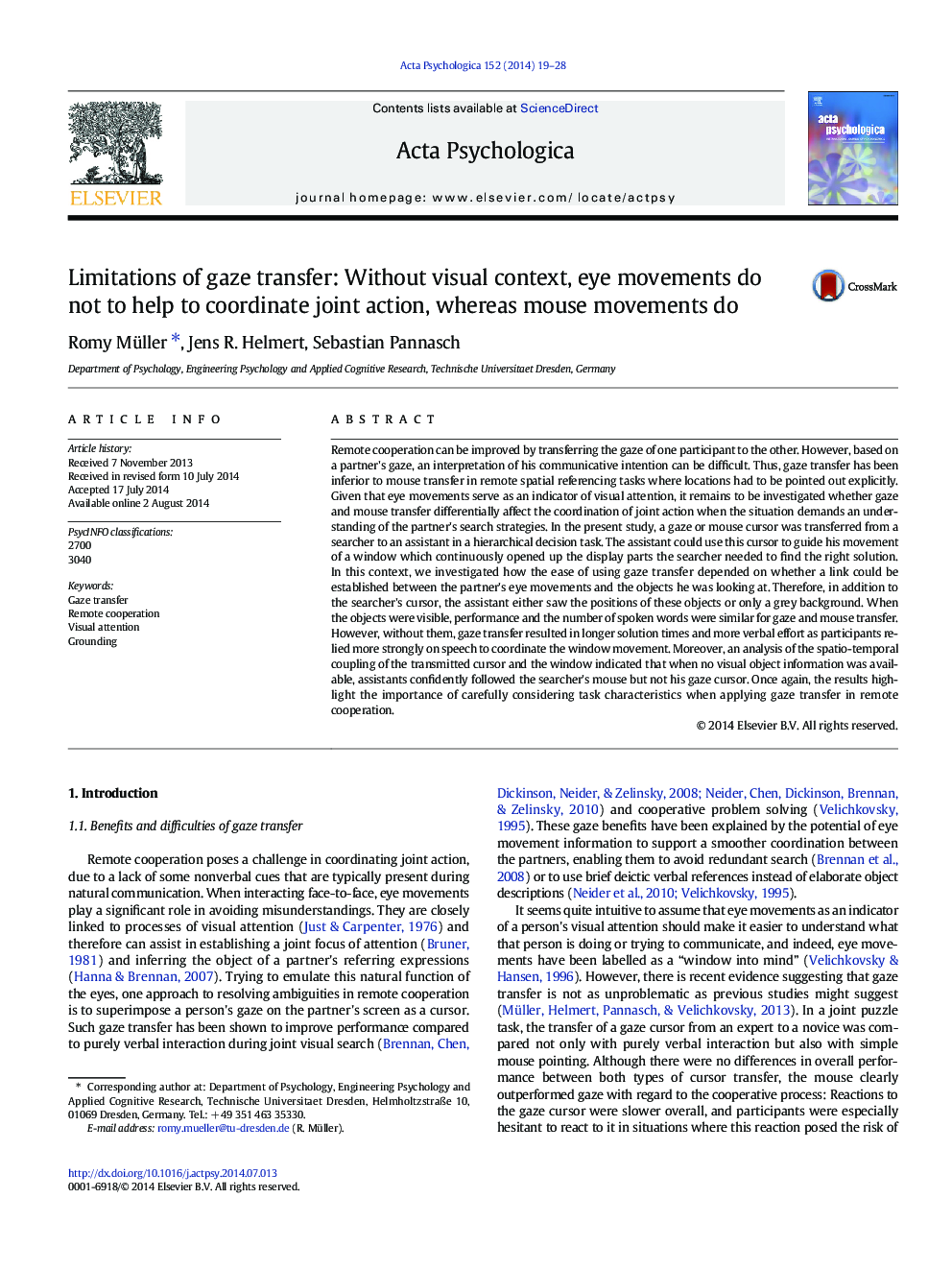| Article ID | Journal | Published Year | Pages | File Type |
|---|---|---|---|---|
| 919781 | Acta Psychologica | 2014 | 10 Pages |
•Using gaze transfer is difficult even when the partner's search process is relevant.•Gaze transfer can only be used when its relation to the attended objects is clear.•Communicative use of gaze is less flexible and adjustable than that of the mouse.•Partners verbally compensate the difficulties in interpreting a partner's gaze.
Remote cooperation can be improved by transferring the gaze of one participant to the other. However, based on a partner's gaze, an interpretation of his communicative intention can be difficult. Thus, gaze transfer has been inferior to mouse transfer in remote spatial referencing tasks where locations had to be pointed out explicitly. Given that eye movements serve as an indicator of visual attention, it remains to be investigated whether gaze and mouse transfer differentially affect the coordination of joint action when the situation demands an understanding of the partner's search strategies. In the present study, a gaze or mouse cursor was transferred from a searcher to an assistant in a hierarchical decision task. The assistant could use this cursor to guide his movement of a window which continuously opened up the display parts the searcher needed to find the right solution. In this context, we investigated how the ease of using gaze transfer depended on whether a link could be established between the partner's eye movements and the objects he was looking at. Therefore, in addition to the searcher's cursor, the assistant either saw the positions of these objects or only a grey background. When the objects were visible, performance and the number of spoken words were similar for gaze and mouse transfer. However, without them, gaze transfer resulted in longer solution times and more verbal effort as participants relied more strongly on speech to coordinate the window movement. Moreover, an analysis of the spatio-temporal coupling of the transmitted cursor and the window indicated that when no visual object information was available, assistants confidently followed the searcher's mouse but not his gaze cursor. Once again, the results highlight the importance of carefully considering task characteristics when applying gaze transfer in remote cooperation.
